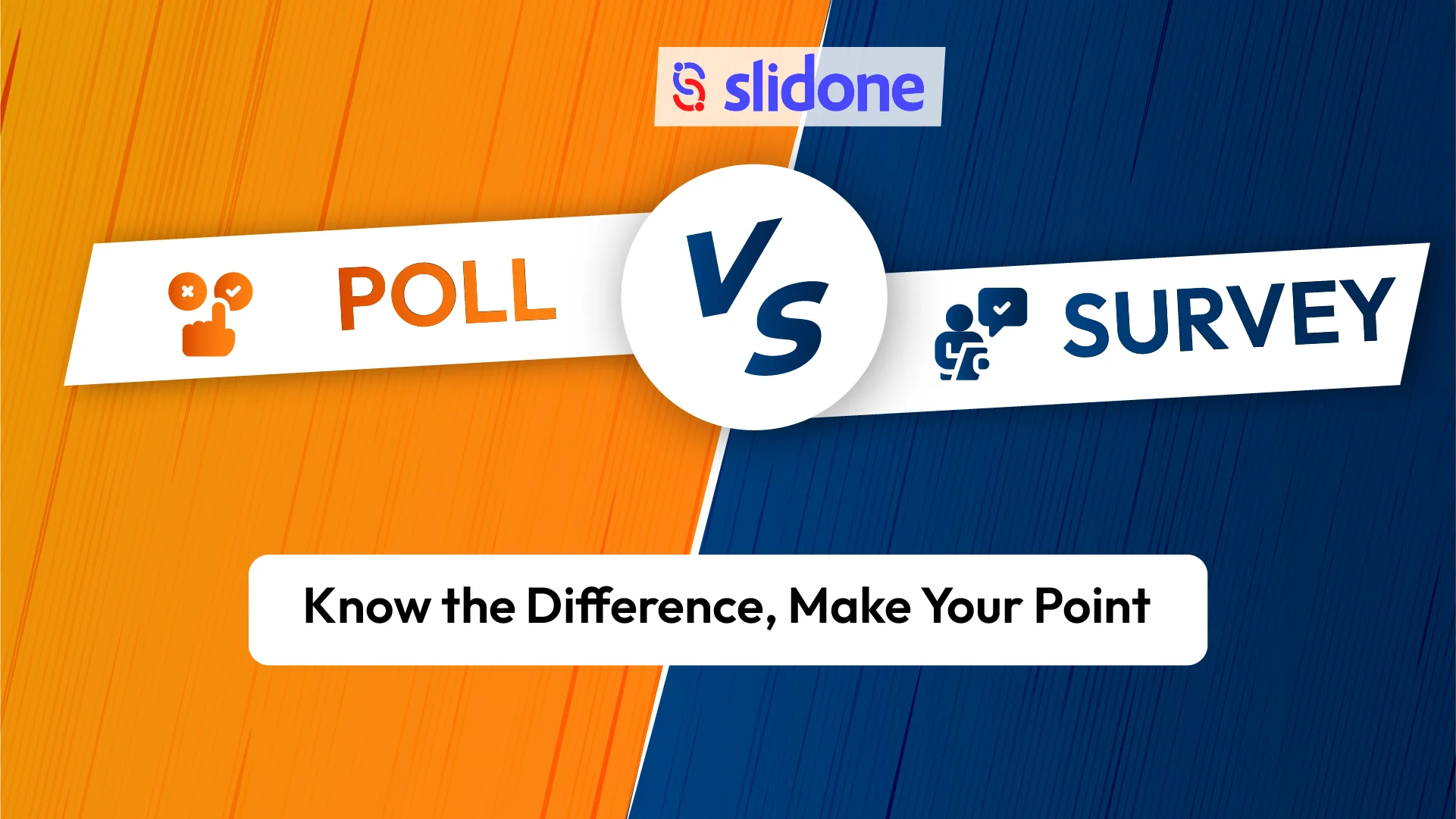Ever sat through those boring presentations with lots of bullet points and dull pictures? Well, what if there was a better way? You can make your presentations more fun and interesting by using polls and surveys. But hold on, before you jump in, it’s important to know the difference between poll vs survey.
Imagine you’re asking a group of people a question, like “Do you like pizza?” A poll is like a quick show of hands or a vote. It’s simple and gives a snapshot of what people think.
Now, a survey is more like having a chat with each person. You ask them several questions, may be even about different topics, to get a deeper understanding of their thoughts.
So, polls are for quick answers, while surveys give you more detailed information. Understanding this difference can help you choose the right tool for your presentations and engage your audience better. Ready to make your point in a more interesting way? Let’s dive in!
What is a Online Poll?
Think of a poll as a quick temperature check. You’re in a meeting, and you want to instantly gauge your team’s opinion about a new marketing campaign. A poll is your friend!
It’s a simple, fast way to gather opinions on a single topic, usually with straightforward response options like “yes/no” or multiple-choice.
Example:
You’re presenting a new product idea to your team. A quick poll could be:
“Do you think this new product will be successful?”
- Yes
- No
- Not sure
What is a Survey?
Now imagine you’re conducting in-depth market research to understand what motivates your customers. That’s where a survey shines. Surveys are more structured and detailed, designed to gather a wealth of information on various aspects of a topic. They often include multiple questions with a range of response types, from multiple-choice and rating scales to open-ended questions.
Example:
Think about a company launching a new website. Their survey might include questions like:
- “How often do you shop online?” (Multiple-choice)
- “On a scale of 1-5, how satisfied are you with our current website?” (Rating scale)
- “What features would you like to see on our new website?” (Open-ended)
Poll vs Survey: Let’s Break it Down
Here’s a simple comparison to highlight the key differences:
Features | Poll | Survey |
|---|---|---|
| Purpose | Quick feedback, general opinions | In-depth data, detailed insights |
| Length Short | (1-3 questions) | Longer (Multiple questions) |
| Questions | Simple, direct (yes/no, multiple-choice) | Varied types (open-ended, ratings, etc.) |
| Analysis | Basic (counting responses) | Complex (identifying trends, statistical analysis) |
When to Use a Online Poll
- Engage your audience during presentations or meetings: Polls are great for breaking up monotonous presentations and keeping your audience actively involved.
- Get quick feedback on an idea or proposal: Need to know if your team is on board with a new strategy? A quick poll can give you immediate insights.
- Make decisions in real-time: In a brainstorming session? Use polls to gather instant feedback and guide the discussion.
When to Use a Survey
- Conduct in-depth research: When you need to gather comprehensive data and analyze trends, a survey provides the structure and depth you need.
- Gather detailed customer feedback: Want to understand what your customers really think about your products or services? A survey can uncover valuable insights.
- Measure satisfaction or opinions over time: Use surveys to track changes in opinions or satisfaction levels, helping you make informed decisions for your business or organization.
Conclusion
Choosing between a poll and a survey depends on your specific goals. Need quick feedback or to energize a presentation? Go for a poll! Need detailed insights and comprehensive data? A survey is your best bet! By understanding the strengths of each tool, you can create engaging, impactful presentations that gather valuable information and leave a lasting impression.



